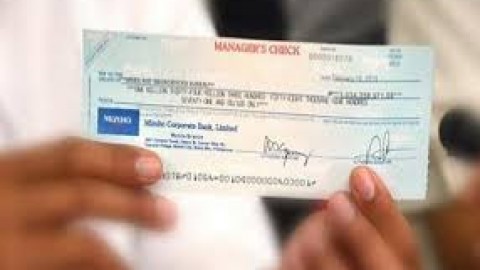So you have decided to purchase an existing business. Regardless of whether the deal is structured as an asset transaction, a stock transaction or a merger, make sure you know what you are getting into by requiring detailed information from the seller regarding its business operations and finances. The following is a checklist of information and documents you should review.

Reputational Compliance
A. Organization and Good Standing.
- The Company’s Articles of Incorporation, and all amendments thereto.
- The Company’s Bylaws, and all amendments thereto.
- The Company’s minute book, including all minutes and resolutions of shareholders and directors, executive committees, and other governing groups.
- The Company’s organizational chart.
- The Company’s list of shareholders and number of shares held by each.
- Copies of agreements relating to options, voting trusts, warrants, puts, calls, subscriptions, and convertible securities.
- A Certificate of Good Standing from the Secretary of State of the state where the Company is incorporated.
- Copies of active status reports in the state of incorporation for the last three years.
- A list of all states where the Company is authorized to do business and annual reports for the last three years.
- A list of all states, provinces, or countries where the Company owns or leases property, maintains employees, or conducts business.
- A list of all of the Company’s assumed names and copies of registrations thereof.
B. Financial Information.
- Audited financial statements for three years, together with Auditor’s Reports.
- The most recent unaudited statements, with comparable statements to the prior year.
- Auditor’s letters and replies for the past five years.
- The Company’s credit report, if available.
- Any projections, capital budgets and strategic plans.
- Analyst reports, if available.
- A schedule of all indebtedness and contingent liabilities.
- A schedule of inventory.
- A schedule of accounts receivable.
- A schedule of accounts payable.
- A description of depreciation and amortization methods and changes in accounting methods over the past five years.
- Any analysis of fixed and variable expenses.
- Any analysis of gross margins.
- The Company’s general ledger.
- A description of the Company’s internal control procedures.
C. Physical Assets.
- A schedule of fixed assets and the locations thereof.
- All U.C.C. filings.
- All leases of equipment.
- A schedule of sales and purchases of major capital equipment during last three years.
D. Real Estate.
- A schedule of the Company’s business locations.
- Copies of all real estate leases, deeds, mortgages, title policies, surveys, zoning approvals, variances or use permits.
E. Intellectual Property.
- A schedule of domestic and foreign patents and patent applications.
- A schedule of trademark and trade names.
- A schedule of copyrights.
- A description of important technical know-how.
- A description of methods used to protect trade secrets and know-how.
- Any “work for hire” agreements.
- A schedule and copies of all consulting agreements, agreements regarding inventions, and licenses or assignments of intellectual property to or from the Company.
- Any patent clearance documents.
- A schedule and summary of any claims or threatened claims by or against the Company regarding intellectual property.
F. Employees and Employee Benefits.
- A list of employees including positions, current salaries, salaries and bonuses paid during last three years, and years of service.
- All employment, consulting, nondisclosure, nonsolicitation or noncompetition agreements between the Company and any of its employees.
- Resumés of key employees.
- The Company’s personnel handbook and a schedule of all employee benefits and holiday, vacation, and sick leave policies.
- Summary plan descriptions of qualified and non-qualified retirement plans.
- Copies of collective bargaining agreements, if any.
- A description of all employee problems within the last three years, including alleged wrongful termination, harassment, and discrimination.
- A description of any labor disputes, requests for arbitration, or grievance procedures currently pending or settled within the last three years.
- A list and description of benefits of all employee health and welfare insurance policies or self-funded arrangements.
- A description of worker’s compensation claim history.
- A description of unemployment insurance claims history.
- Copies of all stock option and stock purchase plans and a schedule of grants thereunder.
G. Licenses and Permits.
- Copies of any governmental licenses, permits or consents.
- Any correspondence or documents relating to any proceedings of any regulatory agency.
H. Environmental Issues.
- Environmental audits, if any, for each property leased by the Company.
- A listing of hazardous substances used in the Company’s operations.
- A description of the Company’s disposal methods.
- A list of environmental permits and licenses.
- Copies of all correspondence, notices and files related to EPA, state, or local regulatory agencies.
- A list identifying and describing any environmental litigation or investigations.
- A list identifying and describing any known superfund exposure.
- A list identifying and describing any contingent environmental liabilities or continuing indemnification obligations.
I. Taxes.
- Federal, state, local, and foreign income tax returns for the last three years.
- States sales tax returns for the last three years.
- Any audit and revenue agency reports.
- Any tax settlement documents for the last three years.
- Employment tax filings for three years.
- Excise tax filings for three years.
- Any tax liens.
J. Material Contracts.
- A schedule of all subsidiary, partnership, or joint venture relationships and obligations, with copies of all related agreements.
- Copies of all contracts between the Company and any officers, directors, 5-percent shareholders or affiliates.
- All loan agreements, bank financing arrangements, line of credit, or promissory notes to which the Company is a party.
- All security agreements, mortgages, indentures, collateral pledges, and similar agreements.
- All guaranties to which the Company is a party.
- Any installment sale agreements.
- Any distribution agreements, sales representative agreements, marketing agreements, and supply agreements.
- Any letters of intent, contracts, and closing transcripts from any mergers, acquisitions, or divestitures within last five years.
- Any options and stock purchase agreements involving interests in other companies.
- The Company’s standard quote, purchase order, invoice and warranty forms.
- All nondisclosure or noncompetition agreements to which the Company is a party.
- All other material contracts.
K. Product or Service Lines.
- A list of all existing products or services and products or services under development.
- Copies of all correspondence and reports related to any regulatory approvals or disapprovals of any Company’s products or services.
- A summary of all complaints or warranty claims.
- A summary of results of all tests, evaluations, studies, surveys, and other data regarding existing products or services and products or services under development.
L. Customer Information.
- A schedule of the Company’s twelve largest customers in terms of sales thereto and a description of sales thereto over a period of two years.
- Any supply or service agreements.
- A description or copy of the Company’s purchasing policies.
- A description or copy of the Company’s credit policy.
- A schedule of unfilled orders.
- A list and explanation for any major customers lost over the last two years.
- All surveys and market research reports relevant to the Company or its products or services.
- The Company’s current advertising programs, marketing plans and budgets, and printed marketing materials.
- A description of the Company’s major competitors.
M. Litigation.
- A schedule of all pending litigation.
- A description of any threatened litigation.
- Copies of insurance policies possibly providing coverage as to pending or threatened litigation.
- Documents relating to any injunctions, consent decrees, or settlements to which the Company is a party.
- A list of unsatisfied judgments.
N. Insurance Coverage.
- A schedule and copies of the Company’s general liability, personal and real property, product liability, errors and omissions, key-man, directors and officers, worker’s compensation, and other insurance.
- A schedule of the Company’s insurance claims history for past three years.
O. Professionals.
- A schedule of all law firms, accounting firms, consulting firms, and similar professionals engaged by the Company during past five years.
P. Articles and Publicity.
- Copies of all articles and press releases relating to the Company within the past three years.
Source: findlaw







